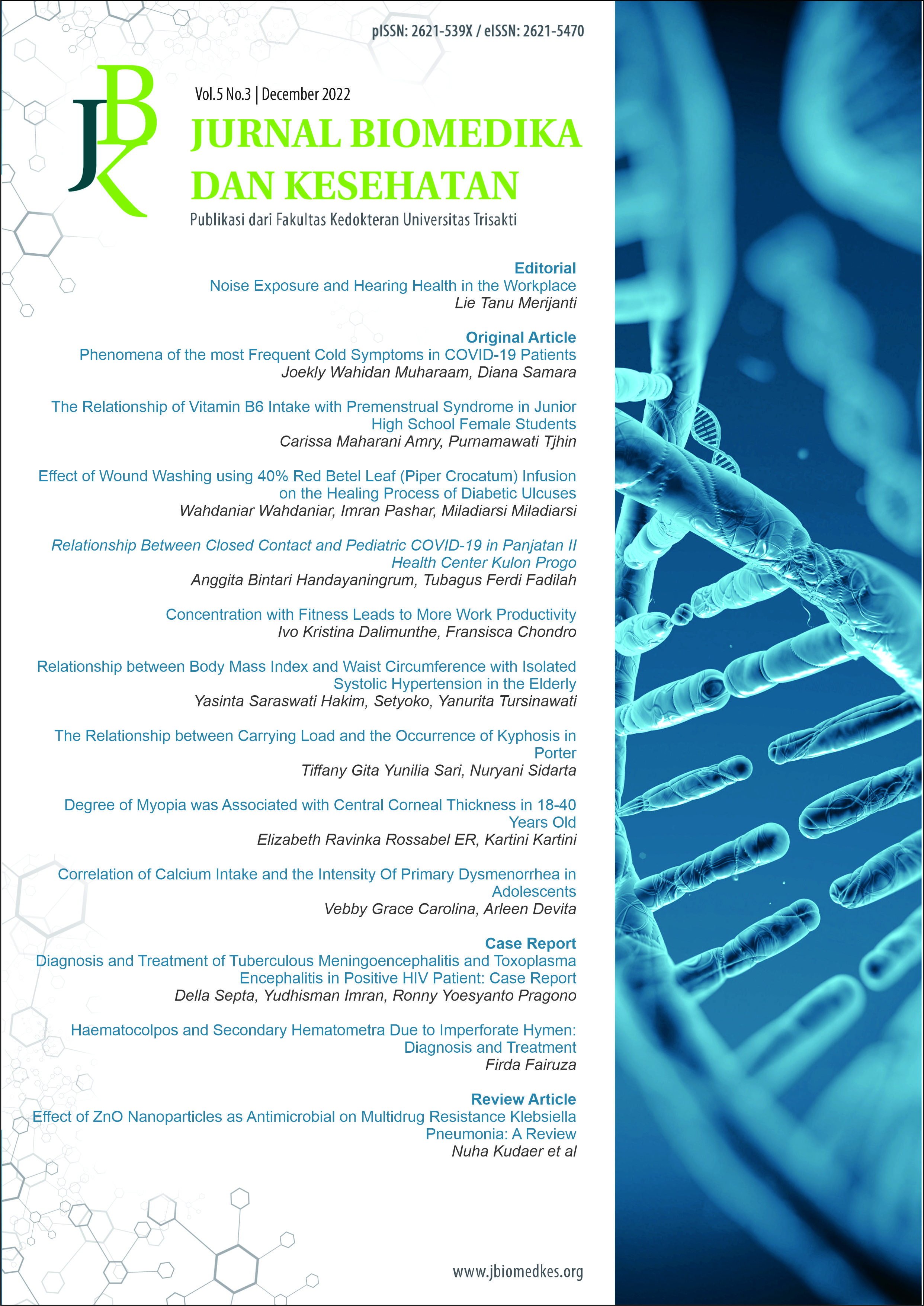Correlation of Calcium Intake and the Intensity Of Primary Dysmenorrhea in Adolescents
DOI:
https://doi.org/10.18051/JBiomedKes.2022.v5.214-220Keywords:
Calcium intake, intensity of primary dysmenorrhea, AdolescentsAbstract
Background
Primary dysmenorrhea is lower abdominal pain happening during menstruation which is not
associated with other diseases or pathology, mostly experienced by adolescents around the world,
including in Indonesia. Calcium intake is considered to affect decreasing the intensity of primary
dysmenorrhea. Lack of calcium can cause muscle spasms and contractions. However, the average
daily intake of calcium in adolescents in Indonesia is still below the recommended adequacy rate. This
study aimed to assess the correlation between calcium intake and the intensity of primary
dysmenorrhea in adolescents.
Methods
This study was done from March 2019 until January 2020; Analyzed the correlation between calcium
intake and intensity of primary dysmenorrhea in 62 adolescents. Calcium intake was assessed using a
semi-quantitative food frequency questionnaire, while the power of primary dysmenorrhea was
assessed using a Visual Analogue Scale questionnaire.
Results
There were 45.2% of adolescents experienced moderate and severe primary dysmenorrhea. In
addition, 51.6% of adolescents experienced less calcium intake, with an average of 804.9 mg per day.
The results showed a correlation between calcium intake and the intensity of primary dysmenorrhea
(p = 0.000).
Conclusions
Calcium intake is related to the intensity of primary dysmenorrhea. While calcium intake in
adolescents is still lacking, it is recommended to consume adequate calcium intake.
Downloads
Downloads
Published
How to Cite
Issue
Section
License
Copyright (c) 2022 Vebby Grace Carolina, Arleen Devita

This work is licensed under a Creative Commons Attribution-NonCommercial 4.0 International License.
The journal allow the authors to hold the copyright without restrictions and allow the authors to retain publishing rights without restrictions.

